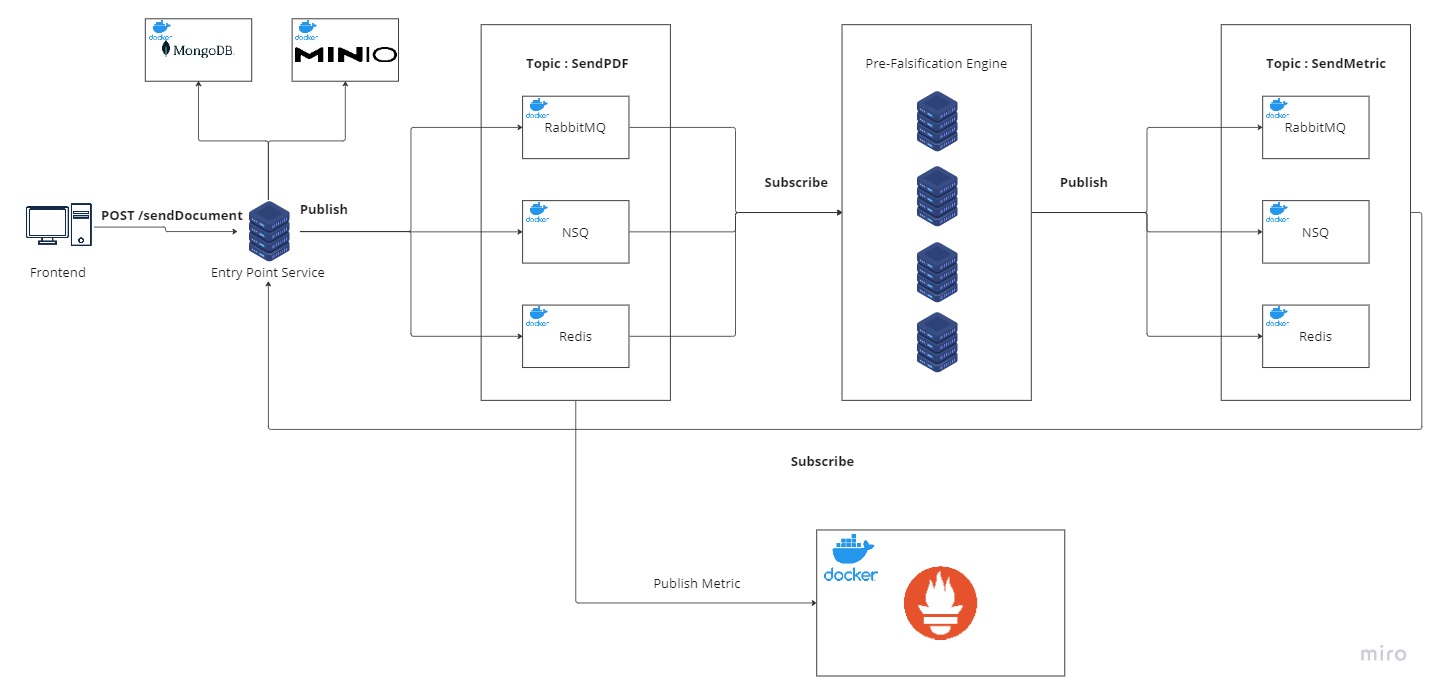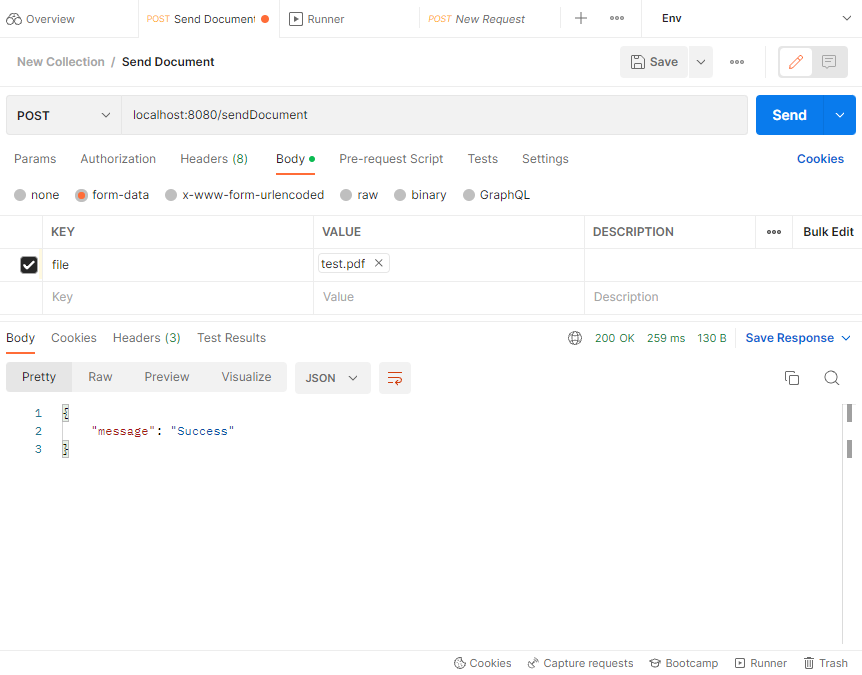 This project use docker to pack every dependencies. However (currently) the Pre-Falsification Engine is unavailable, but you still able to run this software.
This project use docker to pack every dependencies. However (currently) the Pre-Falsification Engine is unavailable, but you still able to run this software.
The Entry Point Service act as gate to access the prefalsification engine. The contract of the Entry Point Service provided below. We store the document on MinIO object storage and results from prefalsification engine on MongoDB (since we don't see any urgencies to use relational databases). The document information flows from Entry Point Service to prefalsification engine via message brokers.
This system use REST API to connect from frontend. The API contract is provided below
| HTTP Method | MIME type |
|---|---|
| POST |
This screenshot from postman shows how to use the /sendDocument endpoint properly
Before you test this application, please supply these environment variables on your .env that you should locate on the root of this repo. Table below tells the key and the value of the environment variable
| Key | Value |
|---|---|
| MONGODB_DB_NAME | documents |
| MINIO_ENDPOINT | localhost:9000 |
| MINIO_ACCESS_KEY_ID | Q3AM3UQ867SPQQA43P2F |
| MINIO_SECRET_ACCESS_KEY | zuf+tfteSlswRu7BJ86wekitnifILbZam1KYY3TG |
| MINIO_BUCKET | documents |
| RABBITMQ_URL_ADDRESS | amqp://guest:guest@localhost:5672/ |
| KAFKA_BROKER_ADDR | localhost:9092 |
- If you encountered error
nsqadmin: UPSTREAM_ERROR: Failed to query any nsqdon nsqadmin, change the value of--broadcast-addressfrom current value to value as set oncontainer_nameondocker-compose.yml(ref: nsqio/nsq#1040). - Make sure to add
nsqdas value to127.0.0.1in youretc\hostfile
In case you want to unlock the graphite integration with NSQ on this project using the non legacy namespace (in this project, the version of graphite using legacy namespace by default), please follow these steps
- Go to CLI on
graphitecontainer, then move toopt/graphite/conf - Update the
storage-aggregation.confandstorage-schemas.conffile as mentioned here https://nsq.io/components/nsqd.html#statsd--graphite-integration - Add the
graphitekey atudp.jsthat located atopt/statsd/config. The result would be like this
{
"graphiteHost": "127.0.0.1",
"graphitePort": 2003,
"port": 8125,
"flushInterval": 10000,
"graphite":{"legacyNamespace": false},
"servers": [
{ server: "./servers/udp", address: "0.0.0.0", port: 8125 }
]
}- Access the graphite browser. Now you'll see the
counterfolder beneath thestatsfolder
- Make sure you are already install
Go. In this version, we usev1.19.1ofGo. - Clone this repo, to desired location, then run
go mod tidy - Make sure you are already install
Docker. After you cloned this repo, rundocker compose up - Run the app by typing
go run main.go
- Make sure to the env variable to use
MINIO_ACCESS_KEY_IDandMINIO_SECRET_ACCESS_KEYas username and password when you want to login to Minio console
